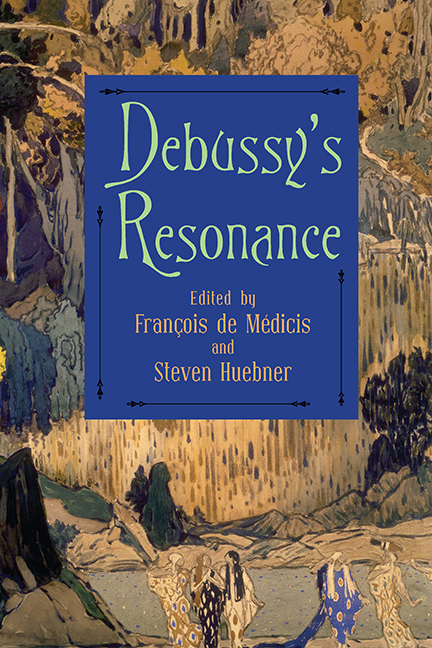Book contents
- Frontmatter
- Contents
- List of Illustrations
- Acknowledgments
- List of Abbreviations
- Introduction
- Part One Historiographical and Editorial Issues
- Part Two Style and Genre
- 5 The “Song Triptych”: Reflections on a Debussyan Genre
- 6 Composing after Wagner: The Music of Bruneau and Debussy, 1890–1902
- 7 Between Massenet and Wagner
- 8 Debussy's Concept of Orchestration
- 9 Oriental and Iberian Resonances in Early Debussy Songs
- Part Three History and Hermeneutics
- Part Four Theoretical Issues
- Part Five Performance and Reception
- List of Contributors
- Index
7 - Between Massenet and Wagner
from Part Two - Style and Genre
Published online by Cambridge University Press: 27 July 2019
- Frontmatter
- Contents
- List of Illustrations
- Acknowledgments
- List of Abbreviations
- Introduction
- Part One Historiographical and Editorial Issues
- Part Two Style and Genre
- 5 The “Song Triptych”: Reflections on a Debussyan Genre
- 6 Composing after Wagner: The Music of Bruneau and Debussy, 1890–1902
- 7 Between Massenet and Wagner
- 8 Debussy's Concept of Orchestration
- 9 Oriental and Iberian Resonances in Early Debussy Songs
- Part Three History and Hermeneutics
- Part Four Theoretical Issues
- Part Five Performance and Reception
- List of Contributors
- Index
Summary
“Do not have me say poison,” pleaded Charles Koechlin in 1926 as he reflected upon the influence of Massenet on the young Debussy. Massenet: the charmer, the composer attentive to his market. Debussy: the bold revolutionary who struggled to attain aesthetic autonomy. Even though these epithets are reductive, and have even become stereotypes, they are difficult to disentangle from any consideration of the relationship of these two figures. That relationship has to negotiate the large chasm that separates them in the usual way of tracing the history of music, a narrative where Debussy assumes the role of a colossal figure who had a major impact on the destiny of Western music, whereas Massenet has a negligible part to play. Koechlin strongly implies that many musicians in the 1920s thought that Massenet had the effect of poison on the young Claude-Achille. It is worth positioning Koechlin's remark in its original context: “Debussy took a long time to shake off the influence (do not have me say poison) of Massenet. It can happen that a lot of time elapses before an artist discovers himself.”
In underlining the slow artistic development of Debussy, Koechlin implicitly touches upon a major issue in debates about his stylistic evolution, debates that have affected the way that critics have positioned Massenet in relation to his younger colleague. According to Maurice Emmanuel, Debussy discovered his own voice quite quickly. In anecdotes first published in a special edition of La revue musicale devoted to Debussy's youth—anecdotes that would become widely disseminated—Emmanuel tells of how Debussy entertained his fellow students at the Conservatoire with “a plethora of chords […], a rippling of weird arpeggios, a gargling of trills with three simultaneous pitches [and] series of unanalyzable harmonic progressions.” Emmanuel took up the same theme in a monograph about Pelléas et Mélisande dating from the same period. Responding to the “cascades of chords” applauded by Debussy's classmates, Émile Durand, the harmony teacher, snapped the piano cover shut on the fingers of his student and scolded him: “you would be better served by practicing harmonic progressions.” In short, Emmanuel tells of the coexistence of two Debussys at the Conservatoire: one, Claude-Achille, who followed the compositional regime of the school, and the other, the “authentic Debussy,” whose mature stylistic and syntactical orientation was already to a certain extent in place.
- Type
- Chapter
- Information
- Debussy's Resonance , pp. 225 - 253Publisher: Boydell & BrewerPrint publication year: 2018



